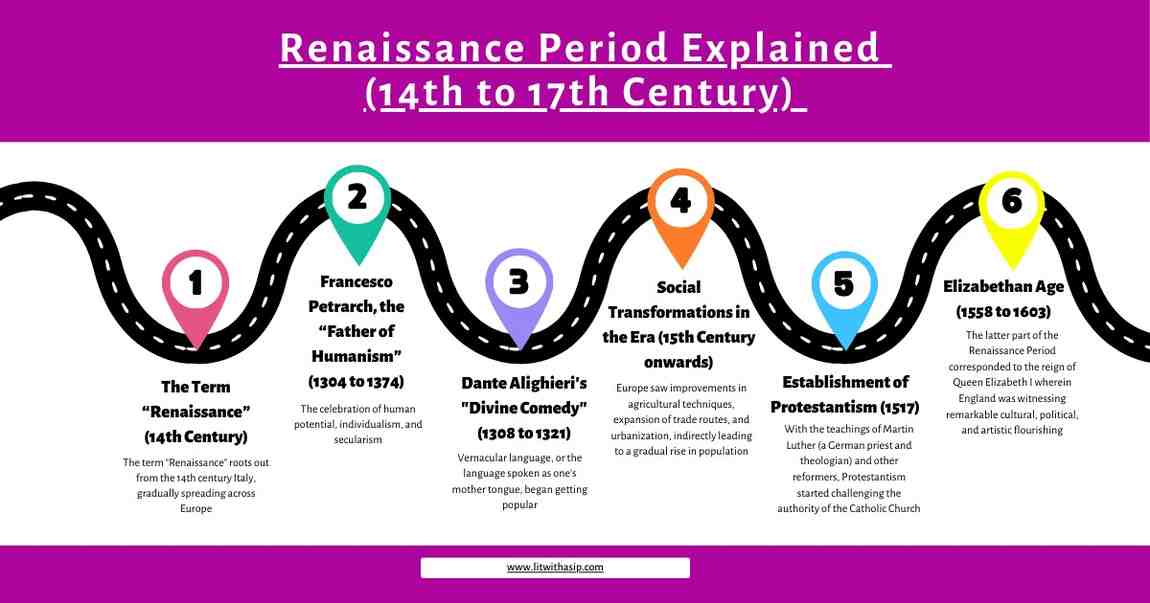
The Renaissance Period, one of the most important eras in not only literature but complete human history, spans from the 14th century to the 17th century. It is considered that this period serves as a bridge between the Middle Ages and Modern History and is filled with brilliant achievements that happened for the first time. A significant resurgence of interest in art, literature, science, and philosophy took place. Advancements such as the rediscovery of classical texts, the rise of humanism, the development of perspective in art, and breakthroughs in fields like anatomy, astronomy, and engineering were witnessed.
Talking specifically about English Literature, the Renaissance Period saw significant shifts in artistic expression, intellectual thought, and cultural sensibilities. Poetry and prose developed as poets and writers came forward to make their contributions. The most important personality was that of William Shakespeare, whose plays and sonnets had a huge impact on literature, theater, and the English language.
This article delves into how various events occurred and shaped this literary era. Read till the end to understand the complete tapestry:
The Term “Renaissance” (14th Century)
The term “Renaissance” roots out in 14th century Italy, gradually spreading across Europe. “Renaissance” originally means “rebirth” in French, describing the cultural and intellectual movement that aimed to revive the values, art, and learning of classical antiquity.
Works from German and Roman philosophers were revived, calling for intellectual creativity. During this time, artists like Leonardo da Vinci, Michelangelo, and Raphael flourished producing masterpieces that celebrated humanism and the beauty of the natural world.
This Renaissance gradually spread beyond Italy and reached other parts of Europe, including England. In England, the Renaissance is often associated with the reign of Queen Elizabeth I (1558-1603), also called the Elizabethan era. During this time, England experienced a cultural flowering with the rise of playwrights like William Shakespeare and Christopher Marlowe. Poets like Edmund Spenser also marked their names through their creative works. These writers drew inspiration from classical sources and contributed to the development of English literature.
Throughout this period, England witnessed religious revolutions, social transformations, and various political changes. It must also be noted that the invention of the printing press (1440) helped make books more accessible and affordable to the masses, facilitating the spread of literature as well as Renaissance ideas.
Francesco Petrarch, the “Father of Humanism” (1304 to 1374).

The celebration of human potential, individualism, and secularism came to life in the Renaissance Period through ideals of Humanism and Individualism. Humanism, a philosophical approach, emphasizes how it is human and not any divine or supernatural being that is of prime importance. At the same time, the theory of Individualism placed an individual higher than the society. It posed a potential opposite to collectivism and totalitarianism placing more importance on an individual in a society.
Francesco Petrarca, a Renaissance Poet, is often called the “Father of Humanism” due to the contributions he made to the humanist movement. He promoted classical learning by dedicating himself completely to studying the classical works of Cicero, Virgil, and Seneca.
His efforts in rediscovering, translating, and disseminating these classical works helped revive interest in ancient learning. He emphasized human dignity and placed importance on human reason, virtue, and self-improvement. He talked about how great the intellectual and moral pursuits of humans have been and how humanist philosophy helped in understanding the worth of human experience, individual talents, and abilities.
Petrarch also criticized Medieval Scholasticism, one he thought relied heavily on tradition and societal authority. This is because his objective was to encourage individuals to engage directly with the world around them, while also questioning established beliefs and doctrines.
Petrarch’s poetry and prose sang of the humanist ideals making use of classical aesthetics.
One of his most important works includes “Canzoniere,” a collection of sonnets that he dedicated to his beloved named “Laura”. This literary work not only showcased his poetic talent but also traversed through themes of love, beauty, and the human condition in a deeply personal and introspective manner.
Dante Alighieri’s “Divine Comedy” (1308 to 1321)
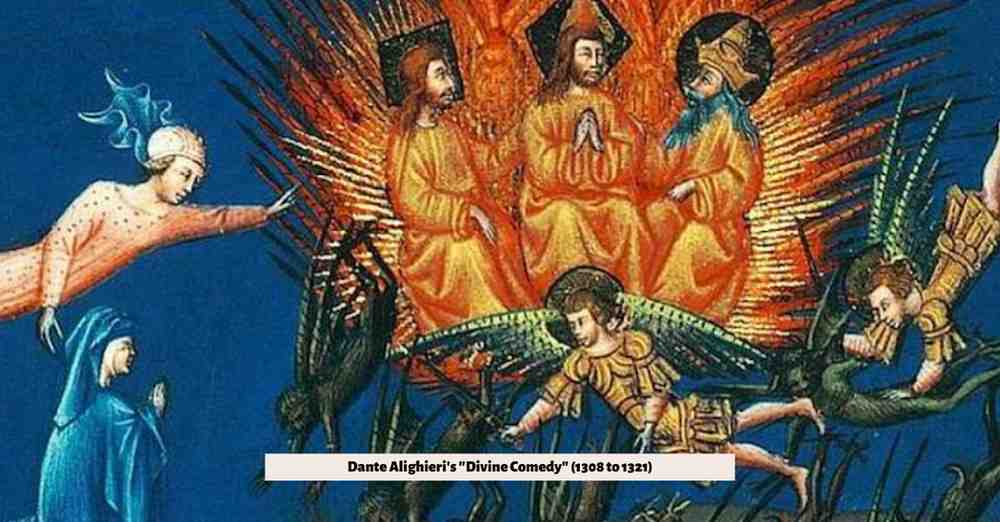
Vernacular language, or the language spoken as one’s mother tongue, began getting popular during theRenaissance Period. It was an informal way of communicating which made it easier for people to express themselves as well as feel connected to what the other person said.
In the 13th century, before the Renaissance, Italian authors used their native vernacular languages in their works, departing from the tradition of writing exclusively in Latin. It gave a more democratic and personal touch to literary works. It made literature accessible to a wider audience beyond the educated elite who could read Latin.
Similarly, during the Renaissance, not only did this trend continue but also intensified, enabling greater cultural exchange and expression. The writers started understanding how the previous works written by writers in their vernacular language were important to be studied. Geoffrey Chaucer’s “Canterbury Tales” and François Rabelais’ “Gargantua and Pantagruel” are two of the popular examples. These works prove to be a rich heritage of ancient learning.
Dante Alighieri’s “Divine Comedy”, an intricate Italian poetry, played a significant role in the development of vernacular literature during the Renaissance period. It became one of the most celebrated literary works through its narrative structure, vivid imagery, and profound exploration of theological and philosophical themes.
Dante’s choice to write in the Tuscan dialect, which later evolved into modern Italian, had a profound impact on the development of national literary traditions. It inspired countless poets and writers to imitate his use of vernacular language and study ancient works. Additionally, it became a symbol of Italian national pride and identity, transcending regional differences and dialects to unite Italians under a common literary heritage.
Social Transformations in the Era (15th Century onwards)
Before we try to understand how various advancements happened in this period, it is important to note what the social scenario at the time was. During the 14th century, Europe experienced significant population fluctuations due to various factors, including the impact of the Black Death, which was one of the deadliest pandemics in human history, and the war that lasted for a hundred years. Facts state that the Black Death caused the swiping off of about three-fourths of England’s population.
However, despite the devastation, population growth did eventually resume in the latter half of the 14th century and into the 15th century. This period saw improvements in agricultural techniques, expansion of trade routes, and urbanization, indirectly leading to a gradual rise in population. The end of widespread warfare and the stabilization of political structures also fostered conditions conducive to population growth in certain regions of Europe.
On the other hand, England was also witnessing social inequality as the merchant class continued to prosper while the lower working class stayed strangled in poverty. Expanding trade networks and capitalist ventures helped the elite class accumulate wealth, whereas the lower class faced hardships such as unemployment and homelessness, ultimately leading to Vagabondage and crime. Peasants migrated to cities in search of livelihoods, resulting in social unrest and concerns about public safety.
Establishment of Protestantism (1517)
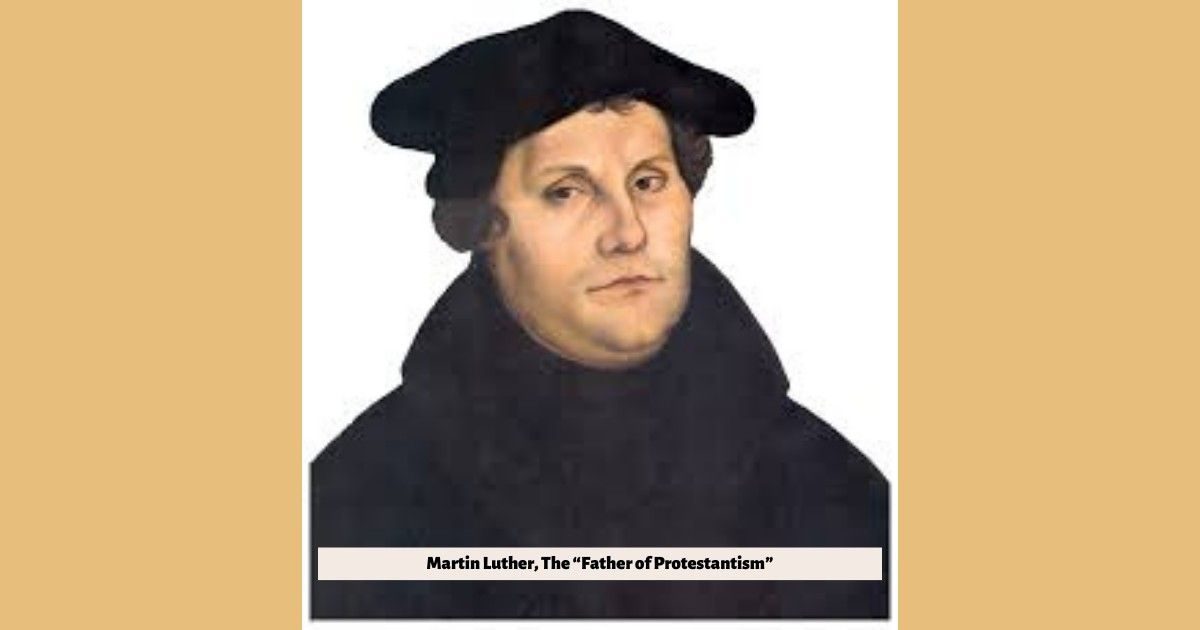
In Medieval England, the Roman Catholic Church held remarkable religious, political, and cultural influence. However, it should be understood that the era brought some of the major religious transitions in society. With the teachings of Martin Luther (a German priest and theologian) and other reformers, Protestantism started challenging the authority of the Catholic Church and attempted to reform its doctrines and practices.
Protestantism focused on opposing the following:
- Pope’s authority
- Roman Catholic Church hierarchy
- Clerical celibacy
- Requirement of priests to remain unmarried
- Suppression of individual interpretation of scripture
- Blind reliance on tradition
- Excessive ritualism and elaborate church ceremonies
- Worshiping of saints and the Virgin Mary
- Doctrine of transubstantiation in the Eucharist
- Spiritual commerce and sale
Protestantism’s establishment in the early 16th century laid the foundation for the development of Anglicanism and shaped the religious and political landscape with the exit of Catholicism.
Elizabethan Age (1558 to 1603)
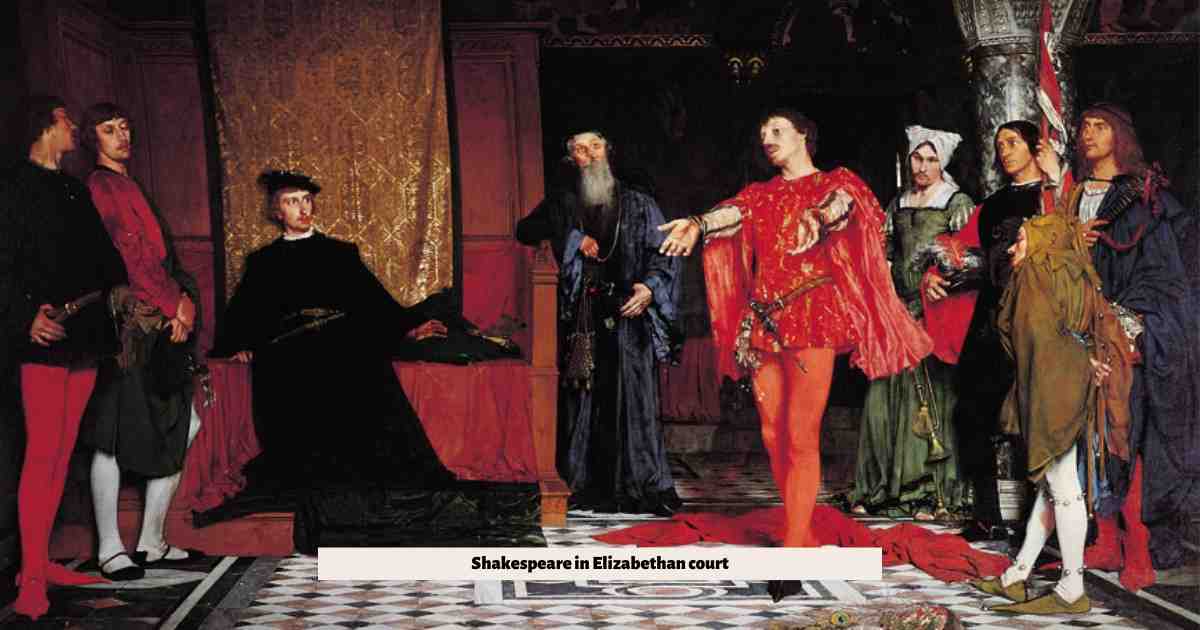
The latter part of the Renaissance Period corresponded to the reign of Queen Elizabeth I wherein England was witnessing remarkable cultural, political, and artistic flourishing. William Shakespeare, often regarded as the greatest playwright in the English language, played a central role in this cultural renaissance.
Shakespeare’s plays were performed in theater which attracted people from all walks of life. With complex characters, rich language, and exploration of universal themes such as love, power, and the human condition, Shakespeare became a favorite to the Queen. He actively contributed to vernacular literature and his sonnets are said to be inspired by the sonnets of Petrarch.
Some of his works included “As You Like It”, “Twelfth Night, or What You Will”, “The Comedy of Errors”, “Much Ado About Nothing”, and “The Taming of the Shrew,” owing to which he is still known as one of the most eminent literary canons. His works are not only responsible for bringing entertainment to the court or initiating a theater culture but also shaped contemporary debates, social norms, and cultural values. The Elizabethan era was also dominated by the works of poets like Edmund Spenser and Sir Philip Sidney.
Things began taking a turn as Queen Elizabeth I started nearing her death. It was a chaotic political condition for the nation as the prospect of a successor loomed large. This was because the queen was “Virgin Queen” (another term Queen Elizabeth I is known with) which is why there wasn’t a legal heir to the throne.
Shakespeare’s plays’ genres also started seeing a shift as his works slowly dived from reveling and comedy to tragedies. His then eminent works included tragedies like “Macbeth”, “Othello”, “Julius Caesar”, “Romeo and Juliet “,”Hamlet “, and “King Lear”. Queen Elizabeth I’s passing marked the end of the Tudor dynasty and the beginning of the Stuart era, with the accession of James I.
At length, it must be noted that the religious tensions persisted, and cultural continuity prevailed as England transitioned from the Elizabethan Age to the Jacobean Era, characterized by its own distinct political, religious, and artistic developments.

Jennis Jacob, a passionate literary enthusiast in her 20s, is a writer and poet. With eight years of experience in literature, she is currently a master in English and finds inspiration in Womanist, American, and Indian Partition Literatures. Her works have appeared in anthologies such as ‘Carved Words Of Creative Minds’ and ‘100 Splendid Voices,’ and she is working on upcoming books. Through LitWithASip, she aims to ignite a love for literature and empower individuals to embrace their true selves.

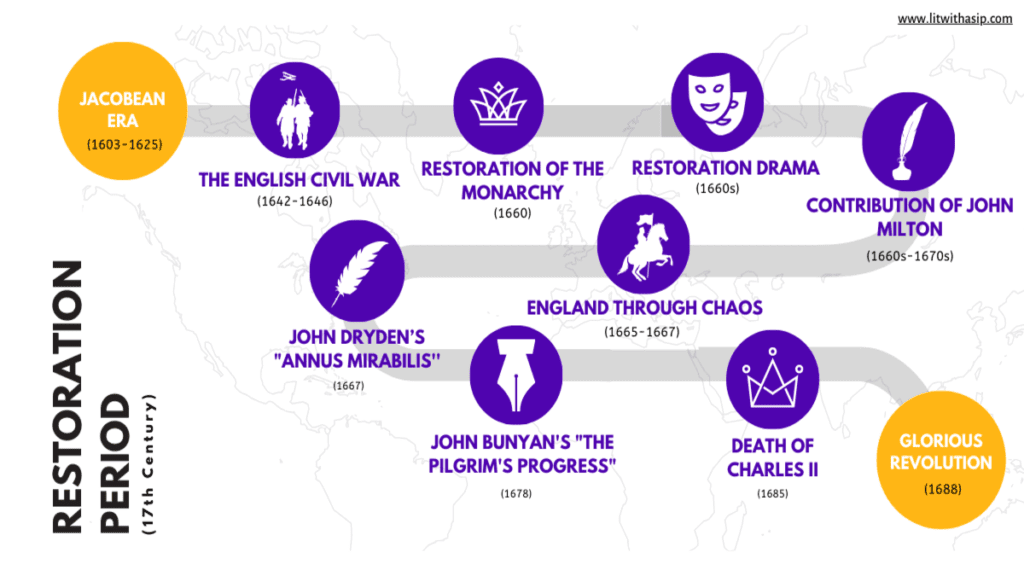
What’s up, this weekend is good in favor of me, as this moment i am reading his fantastic informative
article.